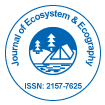எங்கள் குழு ஒவ்வொரு ஆண்டும் அமெரிக்கா, ஐரோப்பா மற்றும் ஆசியா முழுவதும் 1000 அறிவியல் சங்கங்களின் ஆதரவுடன் 3000+ உலகளாவிய மாநாட்டுத் தொடர் நிகழ்வுகளை ஏற்பாடு செய்து 700+ திறந்த அணுகல் இதழ்களை வெளியிடுகிறது, இதில் 50000 க்கும் மேற்பட்ட தலைசிறந்த ஆளுமைகள், புகழ்பெற்ற விஞ்ஞானிகள் ஆசிரியர் குழு உறுப்பினர்களாக உள்ளனர்.
அதிக வாசகர்கள் மற்றும் மேற்கோள்களைப் பெறும் திறந்த அணுகல் இதழ்கள்
700 இதழ்கள் மற்றும் 15,000,000 வாசகர்கள் ஒவ்வொரு பத்திரிகையும் 25,000+ வாசகர்களைப் பெறுகிறது
குறியிடப்பட்டது
- CAS மூல குறியீடு (CASSI)
- குறியீட்டு கோப்பர்நிக்கஸ்
- கூகுள் ஸ்காலர்
- ஷெர்பா ரோமியோ
- சுற்றுச்சூழலில் ஆராய்ச்சிக்கான ஆன்லைன் அணுகல் (OARE)
- ஜே கேட் திறக்கவும்
- ஜெனமிக்ஸ் ஜர்னல்சீக்
- Ulrich's Periodicals Directory
- விவசாயத்தில் உலகளாவிய ஆன்லைன் ஆராய்ச்சிக்கான அணுகல் (AGORA)
- எலக்ட்ரானிக் ஜர்னல்ஸ் லைப்ரரி
- RefSeek
- ஹம்டார்ட் பல்கலைக்கழகம்
- EBSCO AZ
- OCLC- WorldCat
- SWB ஆன்லைன் பட்டியல்
- உயிரியல் மெய்நிகர் நூலகம் (vifabio)
- பப்ளான்கள்
- மருத்துவக் கல்வி மற்றும் ஆராய்ச்சிக்கான ஜெனீவா அறக்கட்டளை
- யூரோ பப்
பயனுள்ள இணைப்புகள்
அணுகல் இதழ்களைத் திறக்கவும்
இந்தப் பக்கத்தைப் பகிரவும்
சுருக்கம்
A Study of Urbanization and Ecosystem Services of Guwahati City from Forest Footprint Perspective
Yadav R and Barua A
The future is urban and it is projected that by 2030, 56% of the population of the developing countries would be living in cities. To meet the overgrowing demand of development natural capital like forests, land and water are being converted into man made capital. The present study is of Guwahati city which is located in the North East region of India. The study area comprises of the areas under Guwahati Metropolitan Development Authority. Guwahati is a growing city with a population of 8,394 in 1891 and 968549 in 2011. The study focuses on the impact of the growth of the city on the forest areas within it. To do so, secondary data of about 100 years (from 1911 to 2015) of forests and the urban growth have been analyzed. The focus of the study is on the forest because, forests play a dual role by providing forestry and wood based natural resources for food, energy and development thus acting as source and at the same time regulate the environment by sequestering carbon dioxide gas emissions, thereby acting as sink. It has been seen from literature review that expansion of city often takes place with the conversion of available forested areas, resulting in loss of ecological services that the forests provide. Therefore, in this study an attempt has been made to understand urbanization from the ecological footprint (forestry) perspective. In this respect, a modified definition of forest footprint has been proposed. The analysis shows that large forest areas were degraded in urbanization process, resulting in denudation of hills, high surface run off and urban flooding. The direct forest footprint of the Guwahati city comes to 0.25. With the reduction in the per capita availability forests from 4866 sq.m in 1911 to 22.06 sq.m in 2015, the Ecological footprint of the city has gone up so much that 5360 sq.km of forests would now be required in 2015 to mitigate the carbon emissions. The city needs to reduce its carbon footprint as well as enhance its carbon sequestration potential many times to become an eco-city.
பாடத்தின் அடிப்படையில் இதழ்கள்
- இயற்பியல்
- இரசாயன பொறியியல்
- உணவு மற்றும் ஊட்டச்சத்து
- உயிர் மருத்துவ அறிவியல்
- உயிர்வேதியியல்
- கணிதம்
- கணினி அறிவியல்
- கால்நடை அறிவியல்
- சமூக & அரசியல் அறிவியல்
- சுற்றுச்சூழல் அறிவியல்
- தகவலியல்
- தாவர அறிவியல்
- நர்சிங் & ஹெல்த் கேர்
- நானோ தொழில்நுட்பம்
- நோயெதிர்ப்பு மற்றும் நுண்ணுயிரியல்
- புவியியல் மற்றும் பூமி அறிவியல்
- பொது அறிவியல்
- பொருள் அறிவியல்
- பொறியியல்
- மரபியல் & மூலக்கூறு உயிரியல்
- மருத்துவ அறிவியல்
- மருத்துவ அறிவியல்
- மருந்து அறிவியல்
- வணிக மேலாண்மை
- விவசாயம் மற்றும் மீன் வளர்ப்பு
- வேதியியல்
மருத்துவ & மருத்துவ இதழ்கள்
- அறுவை சிகிச்சை
- இதயவியல்
- இனப்பெருக்க மருத்துவம்
- இம்யூனாலஜி
- இரத்தவியல்
- உடல் சிகிச்சை மற்றும் மறுவாழ்வு
- எலும்பியல்
- கண் மருத்துவம்
- கண் மருத்துவம்
- காஸ்ட்ரோஎன்டாலஜி
- குழந்தை மருத்துவம்
- சிறுநீரகவியல்
- சுகாதாரம்
- தொற்று நோய்கள்
- தோல் மருத்துவம்
- நச்சுயியல்
- நரம்பியல்
- நர்சிங்
- நீரிழிவு மற்றும் உட்சுரப்பியல்
- நுண்ணுயிரியல்
- நுரையீரல் மருத்துவம்
- பல் மருத்துவம்
- மனநல மருத்துவம்
- மயக்கவியல்
- மரபியல்
- மருத்துவ ஆராய்ச்சி
- மருந்து
- மூலக்கூறு உயிரியல்

 English
English  Spanish
Spanish  Chinese
Chinese  Russian
Russian  German
German  French
French  Japanese
Japanese  Portuguese
Portuguese  Hindi
Hindi